In 1982, amidst the Falklands Conflict between Argentina and the United Kingdom, Operation Algeciras emerged as a significant event. Orchestrated by Argentina, this covert operation aimed to sink British ships stationed at Gibraltar. Although Operation Algeciras did not directly influence the outcome of the Falklands Conflict, its underlying geopolitical implications and historical context make it a noteworthy event to examine.
By Nick Nutter | Updated 15 Jun 2023 | Gibraltar | History |
Login to add to YOUR Favourites or Read Later
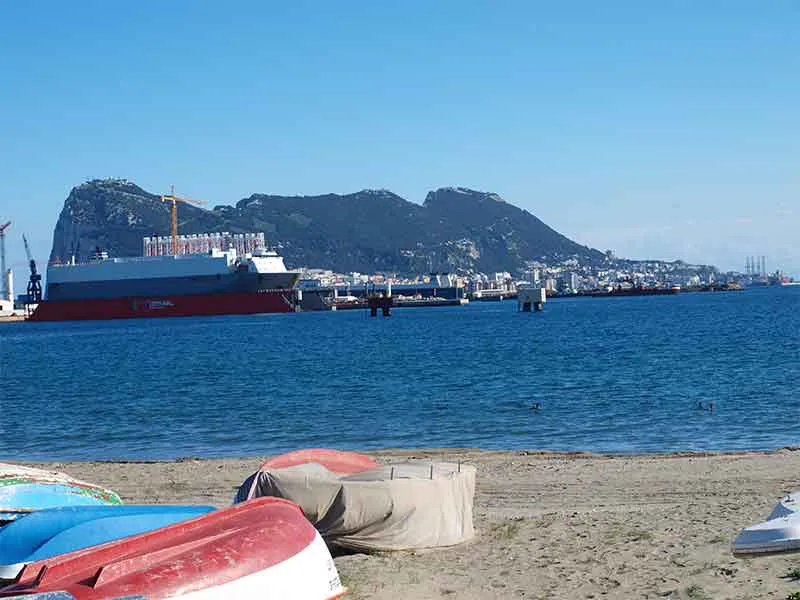
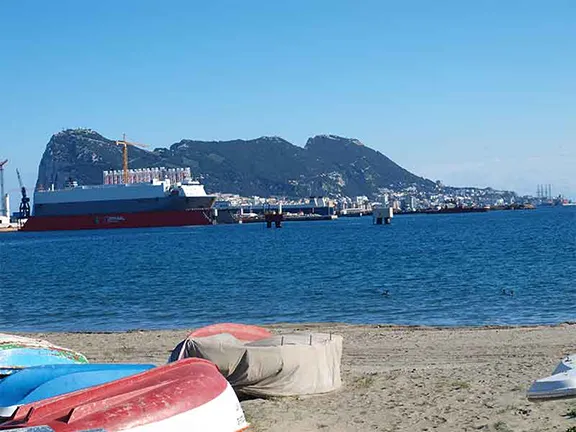
Gibraltar Bay
The Falklands Conflict, which unfolded between April and June 1982, stemmed from Argentina's longstanding territorial claim over the Falkland Islands and South Georgia together with the South Sandwich Isles, a British Overseas Territory located in the South Atlantic. In response to Argentina's invasion of the Falklands, or Las Malvinas as they knew them, the United Kingdom swiftly dispatched a task force to reclaim the islands, leading to a full-scale war. The military junta that ruled Argentina, headed by General Leopoldo Fortunato Galtieri Castelli, thought that they had a fait accompli and that there was nothing the British could do to respond – a view that was held by many.
Galtieri and his junta failed to consider the tough approach that would be taken by Margaret Thatcher, the British Prime Minister of the time, and the wave of patriotic fervour that swept through Britain when news of the invasion became public. On the 5th of April 1982, just three days after the invasion, Thatcher said, “We must recover the Falkland Islands for Britain and for the people who live there who are of British stock.” On the same day, the first ships, including HMS Hermes and HMS Invincible, set sail towards the Falklands and Operation Corporate was launched, an expedition to recover the islands and reassert British sovereignty.
Admiral Jorge Anaya, head of the Argentine Navy and a member of the military junta running the country, devised an operation that, he hoped, would divert British Naval resources away from the Falklands. His plan was to attack British naval ships in their home ports to disrupt the huge logistical supply line between Britain and the Falklands by forcing the Royal Navy to allocate some of its resources to protecting its own ships and the fleet auxiliaries whilst they were in port. The great naval bases of Portsmouth and Devonport were considered too well protected. Gibraltar was chosen as the target and the plan was given the unimaginative name of Operation Algeciras.
Anaya summoned Admiral Eduardo Morris Girling to his office. Girling was responsible for the Naval Intelligence Service, and Anaya explained to him the convenience of hitting the Royal Navy in Europe. Girling would be the one who would make the plan and select the participants, but Anaya remained in charge of the operation throughout.


Máximo Nicoletti
The man chosen to lead the operational part of the team was Máximo Nicoletti, a diver and expert in underwater explosives, whose background sounds like that of a fictional superhero.
Nicoletti was the son of an Italian World War II diver with Decima Flottiglia MAS —a branch of the Italian Regia Marina that had inflicted tremendous damage sabotaging Allied capital ships in port during the conflict, notably at Gibraltar.
Whilst a member of the Argentinian resistance group, the Peronist Montoneros, Máximo Nicoletti had already blown up three Argentine ships and attempted to assassinate Admiral Anaya’s predecessor.
On the 1st of November 1974, he planted explosive on the yacht of a general commissioner of the Argentine federal police, killing him and his wife.
The following year he detonated a 175-pound charge on the riverbed underneath ARA Santísima Trinidad, a Type 45 destroyer of British design being built under license in Argentina.
A third attack narrowly missed killing the Navy’s then Commander-in-Chief on his yacht.
Nicoletti’s was eventually apprehended by agents of the notoriously brutal Navy Mechanic’s School. However, recognizing an individual with useful talents, they recruited Nicoletti rather than torturing him and tossing him out of an airplane over the Atlantic as was then customary for “disappearing” the military dictatorship’s foes.
Two other ex-members of the Montoneros who had changed side rather than take an unscheduled bath in the Atlantic were also recruited. They were Antonio Nelson Latorre and another man who went by the name "Marciano," who remains anonymous to this day.
The overall commander was an Argentine spy and former naval officer, Héctor Rosales, who would not take part in the attack and was the liaison with the Argentine military.
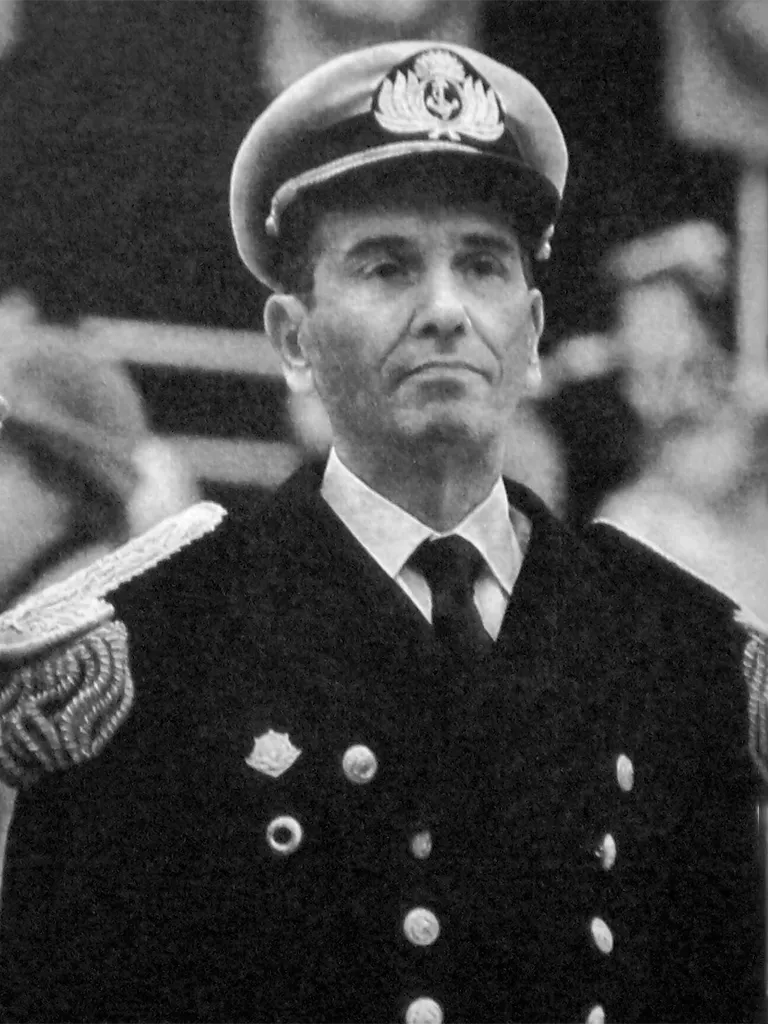
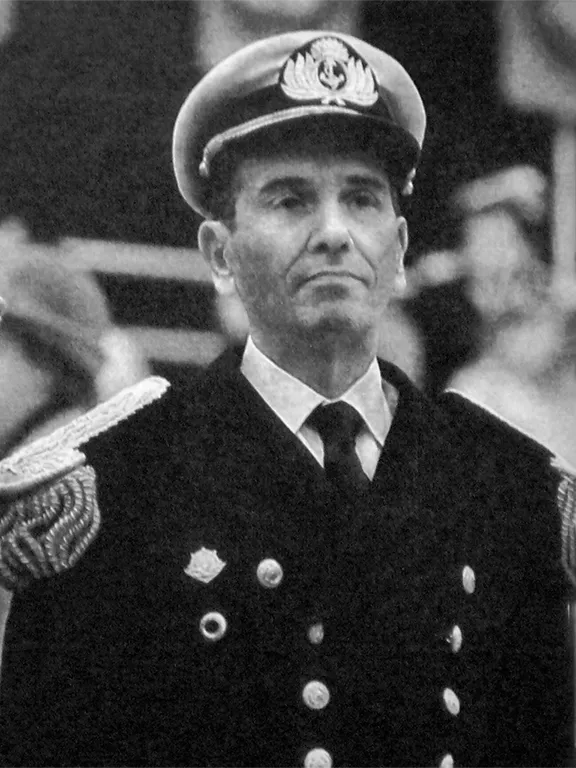
Admiral Jorge Anaya
The three operatives and liaison officer were to fly separately from Buenos Aires to Spain.
Limpet mines of Italian manufacture would be sent to the Argentine Embassy in Madrid.
The operatives would transport the mines to a ‘safe house’ in Algeciras, just across the bay from the naval anchorage at Gibraltar.
Other kit required by the divers, fishing gear and a rubber boat, would be purchased once they were in Spain.
From Algeciras they would observe Royal Naval shipping entering and leaving harbour until a suitable target was spotted. As cover they would pretend to be fishermen, paddling around the bay in an inflatable boat.
Once approval of the target was obtained from Admiral Jorge Anaya, the plan called for the diving team to enter the water at Algeciras at 6pm, plant their mines around midnight and swim back by about 5am. The mines would be set to blow sometime after 5am.
The entire team, or commando, would then exfiltrate by road to Barcelona, over into France, across to Italy and from there, fly back to Argentina.

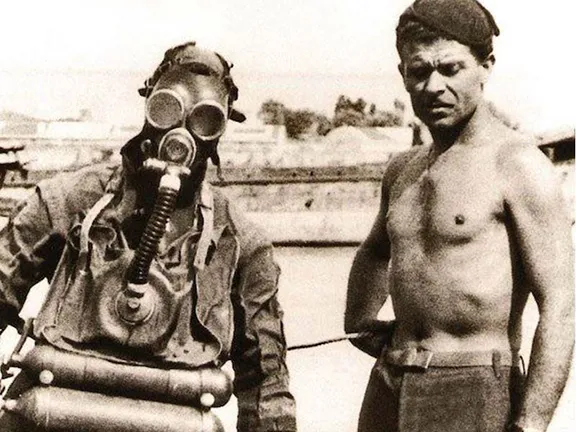
Divers of Italian Regia Marina - Decima Flottiglia MAS - 1942
Operation Algeciras bears a striking similarity to a 1942, exactly 40 years earlier, WWII operation called Ursa Major during which underwater operatives of the Italian Regia Marina used an interred ship, the tanker ‘Olterra’ moored at Algeciras as headquarters from which to launch submerged attacks on allied shipping anchored at Gibraltar, down to the use during Operation Algeciras of Italian manufactured limpet mines and a team leader related to a member of the Italian Regia Marina.
On the 24th of April 1982, Nicoletti and Latorre flew from Buenos Aires to Paris and from there to Málaga using false passports and carrying closed-circuit, military scuba gear. They were well supplied with funds in the form of U.S. dollars. The two men made their way to Estepona and hired a rental car from a local car rental agency and established themselves in a hotel. They spent a few days reconnoitring the area and then took the rental car to Madrid to meet Rosales and Marciano. While in Spain, the diving team communicated daily by telephone with the naval attaché of the Argentine embassy in Madrid, who in turn would relay everything back to his superiors in Buenos Aires.
Two 75-kilogram limpet mines, manufactured in Italy, were sent in the diplomatic pouch to the Argentinian Embassy in Madrid. They were handed over to Nicoletti and his team by the naval attaché. The journey back to Algeciras carrying the mines in the cars was fraught with danger.
Spain was the host for the FIFA World Cup in July that year and police were on alert for possible terrorism by Basque separatists of the ETA, security was tight. Police checkpoints were on many roads and the Argentine commando had to scout ahead as they transported the explosives through the country. Nicoletti went ahead as a scout, the other two cars ten minutes apart. They had no way to communicate between cars except visually. Nicoletti encountered a police checkpoint and turned around to warn his accomplices, but even though he signalled them, the first car behind him did not see him and continued until the checkpoint and turned around. They all met up again, their U-turns having gone unnoticed by the police officers manning the checkpoint.
Once they reached Algeciras, the commando unit booked into three separate hotels. Over the next few days, they were to change hotels on a regular basis, always paying with cash in U.S. dollars. Meanwhile they kept observations on naval traffic at Gibraltar.
At the Algeciras branch of El Cortes Ingles, an up-market department store, they purchased fishing gear, an inflatable boat, and a telescope for their ‘fishing’ expeditions.
The observers discovered that security in the harbour was poor. There was only one small naval patrol craft and no sign of sentries. The diving team were all set to carry out their attack by the 2nd of May. All they needed was a suitable target and permission to strike.
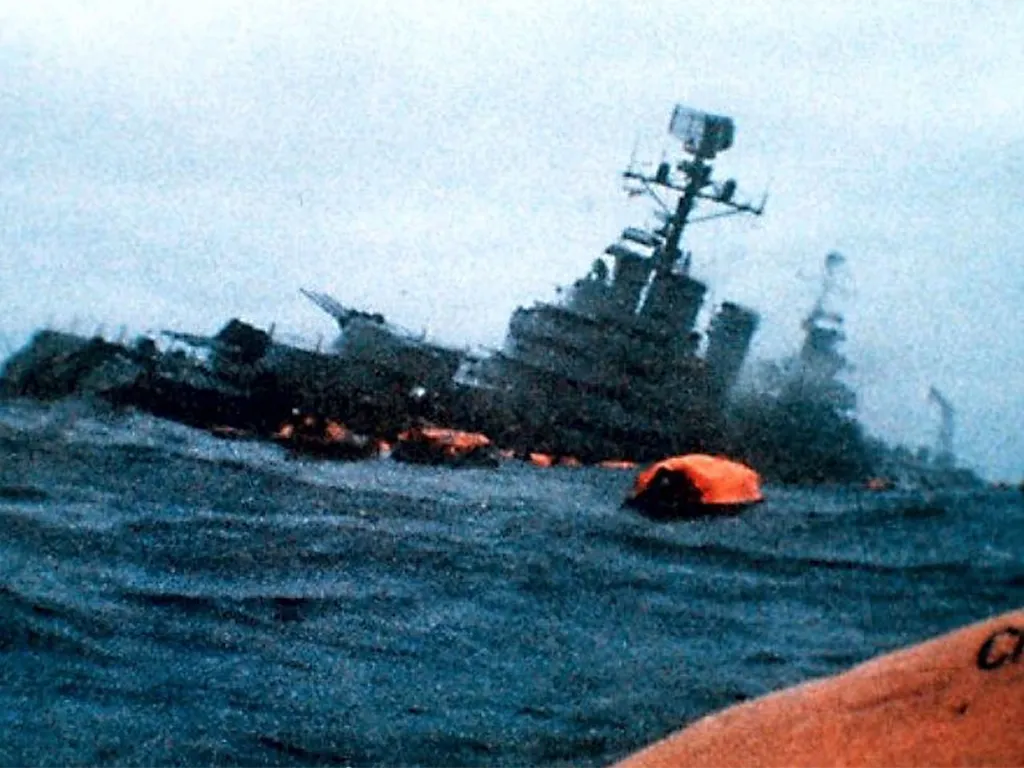
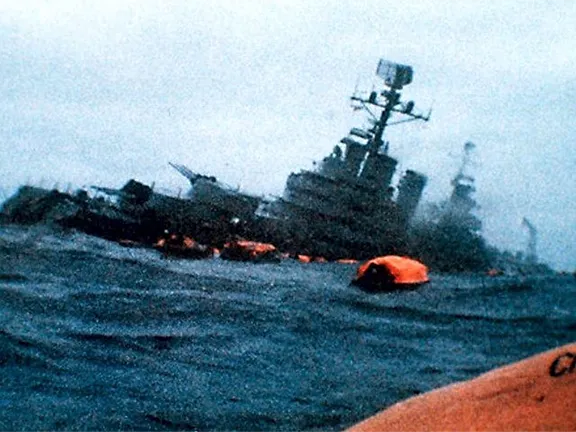
ARA General Belgrano 2nd May 1982
By the 2nd of May, the task force was well on its way to the Falklands and Galtieri was realising he had probably bitten off more than he could chew. In the background Peruvian President Fernando Belaúnde had produced a comprehensive peace plan that the Argentinian high command believed might produce a peaceful resolution to the conflict. Until that date Admiral Anaya was reluctant to give permission for any aggressive action against British forces, including shipping at Gibraltar.
However, that attitude changed when at 3:57 pm on the 2nd of May 1982, the British submarine HMS Conqueror fired a spread of three torpedoes at the Argentine cruiser ARA General Belgrano, located approximately 230 nautical miles southwest of the Falkland Islands. The Belgrano sank resulting in the death of 323 Argentine sailors. On the following day, Admiral Anaya gave permission for Nicoletti and his team to prosecute an attack on a suitable target.
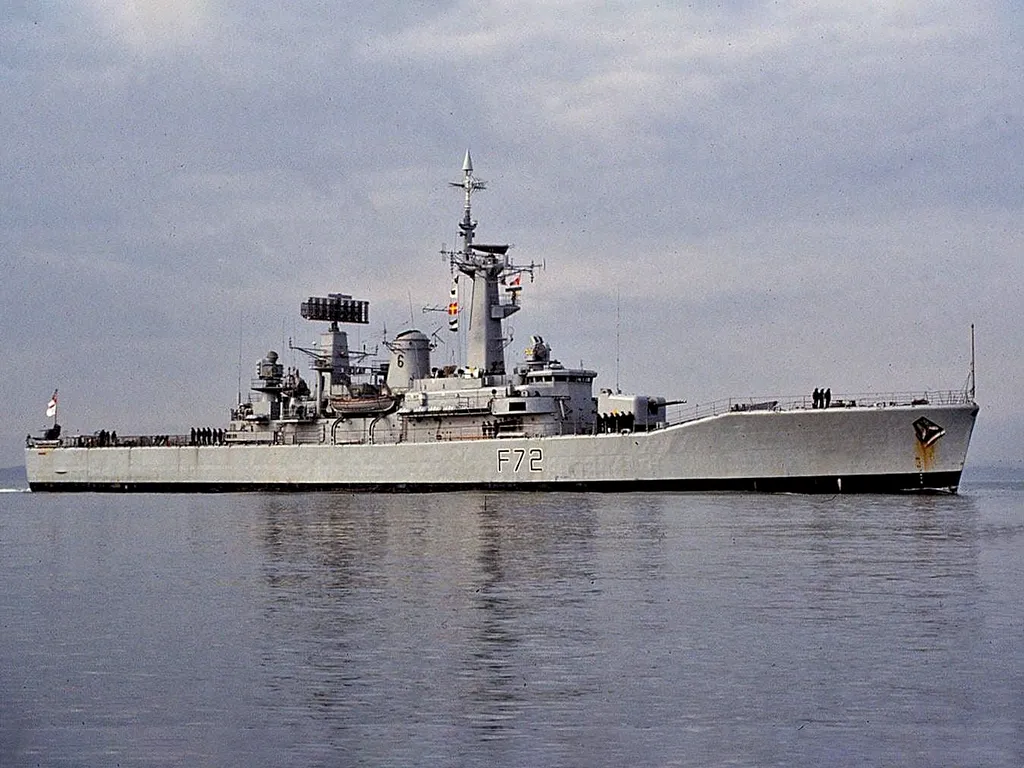
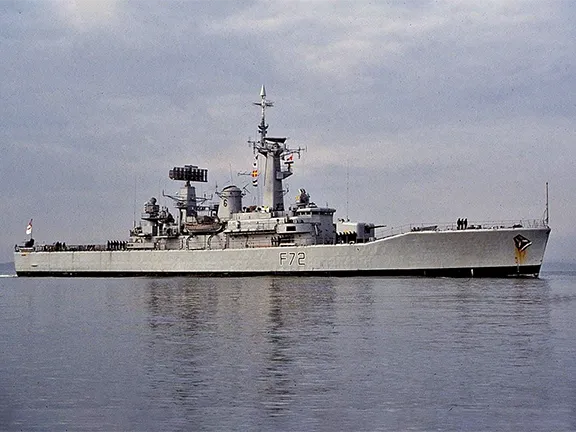
HMS Ariadne
The first potential target was a British minesweeper, but Anaya decided this was not worth the effort. The next was a large oil tanker. Although not flying a British flag, Nicoletti thought the ship would effectively block the harbour. Anaya again refused permission on the grounds that a large oil spill would be an environmental disaster that would enrage the Spanish authorities who, quietly, supported Argentines aggression in the Falklands. Finally, a high value target, HMS Ariadne, a Leander class frigate, entered the harbour on the 10th of May.
Nicoletti received permission to carry out the attack the following day, the 11th of May. To prepare for their escape, Latorre and Rosales went to the car rental agencies to extend their car hires for another week. This is where it all started to go wrong.
Coincidentally, a local bank had been robbed by a gang composed of Argentines and Uruguayans not long before and the police had asked businesses to keep an eye out for the culprits. Manuel Rojas, the manager of one of the car rental agencies, had already mentioned to the police that he had a suspicious customer who rented in cash, paid U.S. dollars and had evidently also rented cars at the same time from other rental agencies. He was asked to inform the police when that customer returned.
The police arrived and arrested Latorre and Rosales and then went to the hotel where they found Nicoletti and “Marciano” still asleep in their beds in preparation for the long swim that night. A search of their vehicles revealed the limpet mines, rubber dinghy and diving equipment.
When questioned, Nicoletti admitted he was part of a secret operation to strike a blow for Argentina.
Málaga police chief Miguel Catalán was informed, and he passed the information on to Prime Minister Leopoldo Calvo Sotelo who just happened to be campaigning in Málaga at that time.
Spain was in an unenviable position. They could sympathise with Argentina’s ambition to retake the Malvinas Islands, after all, the British were also hanging on to a piece of Spanish territory, Gibraltar, but they could not be seen to openly support Argentina because they had only just joined NATO (1982). In fact, NATO members could not take any action against Argentina because Article 6 of the North Atlantic Treaty specifies that collective self-defence is applicable only to attacks on member state territories north of the Tropic of Cancer.
In any case the situation was embarrassing, so Sotelo ordered the four saboteurs to be returned to Argentina secretly. One of the arresting officers told Nicoletti that if they had known their intent beforehand, they may well have turned a blind eye to their activities.
Nicoletti disarmed the mines since the police did not have anybody capable of doing so. He was then allowed to collect his dry cleaning and, as a thank you, took the entire party, including the police officers, to lunch, paying in US dollars of course.
The four men were escorted by air, to Madrid, still travelling on their false passports. It was in Madrid airport that the police realised they had not taken any mug shots or checked any identification documents. Rather than take individual photographs, a group photo was taken with four smiling saboteurs and assorted escorting police officers.
The Argentinian commando group were then flown to the Canary Islands and back to Argentina.
The Spanish police were ordered to destroy all written evidence of the presence of the Argentinians, including the group photograph.
It was not until 2003 that a documentary called ‘Algeciras’ was produced with interviews of Anaya and some of the participants, including a rather enthusiastic Nicoletti. It was during the recording of this documentary that Nigel West, a British writer specialising in covert operations, told the film crew that it was in fact British Intelligence who had intercepted messages between Madrid and Argentina that tipped off the police.
Had the plot been foiled by British intelligence—or a zealous car rental proprietor? Fortunately for everyone involved, Operation Algeciras is a war story where nobody had to die in the end.